Botswana, a landlocked Southern African country, is endowed with some of the most beautiful and unspoiled landscapes in Africa. The country offers visitors an array of exceptional wildlife viewing opportunities, cultural experiences, and adventure activities. The promotion of responsible tourism ensures these natural treasures will be preserved for generations to come.
If you’re looking to visit Botswana, this article outlines the best places to visit.
Okavango Delta

The Okavango Delta, often referred to as “the jewel” of the Kalahari, is a very large and swampy inland delta formed where the Okavango River reaches a tectonic trough in the central part of the endorheic basin of the Kalahari. All the water reaching the Delta is ultimately evaporated and transpired, and does not flow into any sea or ocean.
Situated in northwestern Botswana, this UNESCO World Heritage Site is one of the very few major interior delta systems that do not flow into a sea or ocean, with a wetland system that is almost intact. One of the unique characteristics of the site is that the annual flooding from the River Okavango occurs during the dry season, with the result that the native plants and animals have synchronized their biological cycles with these seasonal rains and floods. It is an exceptional example of the interaction between climatic, hydrological and biological processes.
The delta covers a vast area of about 15,000 square kilometers, although the size may vary significantly depending on the flooding each year. Despite its lush appearance, the soil of the delta is sandy and not rich in nutrients, but the waters carry nutrient-rich sediment which supports the great variety of life found here.
The Okavango Delta is home to an impressive array of wildlife. It includes 122 species of mammals, such as African bush elephant, African buffalo, hippopotamus, lechwe, topi, blue wildebeest, giraffe, Nile crocodile, lion, cheetah, leopard, brown hyena, spotted hyena, Greater kudu, sable antelope, black rhinoceros, white rhinoceros, and African wild dog. It also houses 71 species of fish, including Tigerfish and Tilapia, and more than 400 species of birds.
A wide range of activities is available to visitors to the Okavango Delta. They can explore the delta and its wildlife by mokoro (a traditional dugout canoe), by motorboat, on foot, or on game drives in a 4×4 vehicle. For a truly unforgettable experience, hot-air balloon rides over the delta are also available, offering a bird’s-eye view of this incredible landscape.
Chobe National Park
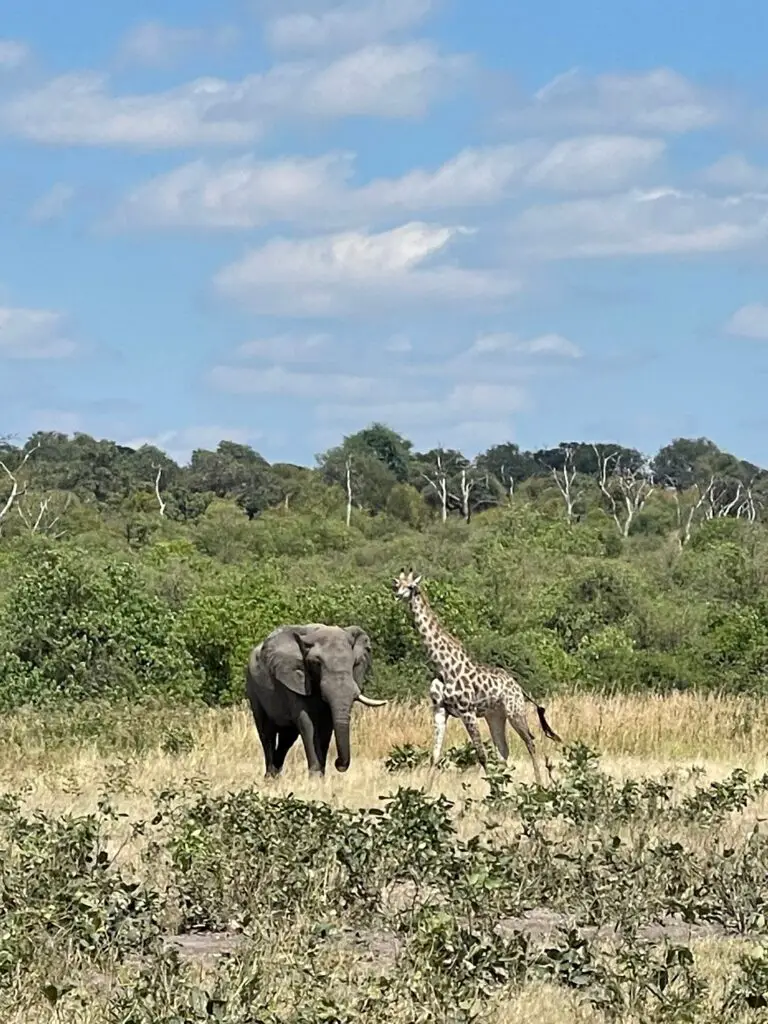
Located in the northeastern corner of Botswana, Chobe National Park is one of Africa’s premier wildlife destinations. Named after the Chobe River that forms the park’s northern boundary, it covers an area of approximately 11,700 square kilometers and features four distinct ecosystems: the Chobe Riverfront, the Ngwenzumba pans, Savute, and Linyanti.
This is the most visited area of the park due to its dense wildlife population. During the dry season, elephants, buffalos, antelopes, and other wildlife flock to the riverfront to drink, providing a paradise for wildlife photography. Lions, hyenas, leopards, and African wild dogs are also frequently spotted here.
East of the Chobe Riverfront, the Ngwezumba pans attract a different array of wildlife, including giraffes, zebras, and wildebeests, and occasionally, cheetahs.
The Savute area, in the west of the park, is known for its large prides of lions, hyenas, and zebras. The area’s marsh attracts a wide range of birdlife, while the dead trees and rocky outcrops provide perfect perches for eagles and other raptors.
The Linyanti marshes on the park’s western boundary are less crowded and offer a more remote and private safari experience. This region is known for its predators, including lions, leopards, and African wild dogs.
Chobe National Park is renowned for its elephant population — the highest in Africa. It’s estimated to contain between 50,000 to 120,000 elephants, a population that can be destructive to the park’s woodland areas due to their feeding habits but presents a phenomenal sight for visitors.
The park offers excellent wildlife viewing throughout the year. The dry season (May to October) is the best time to visit, as animals congregate around the Chobe River and other permanent water sources, making them easier to spot. The wet season (November to April) brings lush landscapes and the arrival of migratory birds, making it a great time for birdwatching.
Chobe offers a range of safari activities, including game drives, boat safaris on the Chobe River, and bird watching. Some lodges also offer fishing and photographic safaris.
Moremi Game Reserve
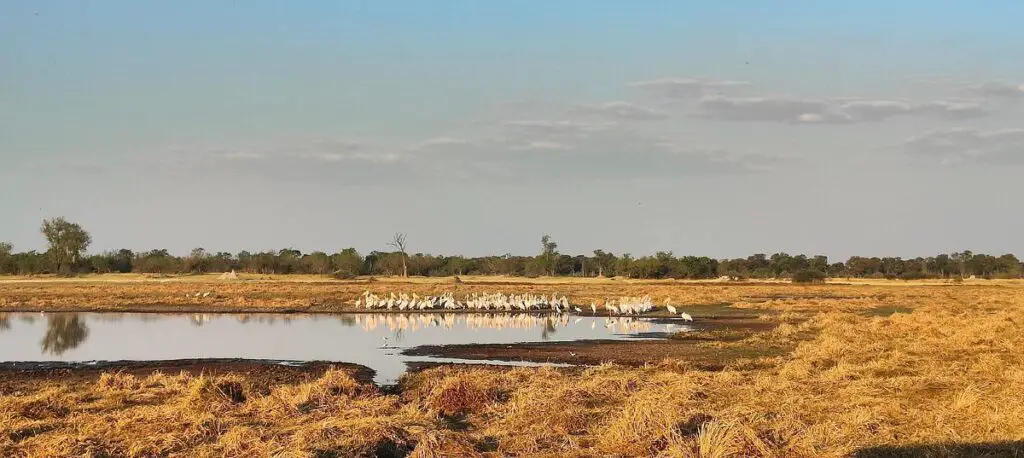
Located on the eastern side of the Okavango Delta, Moremi Game Reserve is a rich and diverse wildlife sanctuary that spans around 3,900 square kilometers. It is named after Chief Moremi of the BaTawana tribe and was designated as a game reserve, rather than a national park, when it was created in 1963. The distinction allowed the local BaSarwa (Bushmen) to continue living in the reserve.
Moremi Game Reserve is famous for its spectacular game viewing and bird watching, with a mix of both water and land activities. The reserve includes the mainland and the delta, so it offers a unique combination of lagoon and dry land. This diversity makes Moremi Game Reserve a versatile wildlife habitat, attracting a wide variety of species throughout the year.
The Moremi Game Reserve is home to a vast number of species, including African Elephant, Cape Buffalo, Impala, Zebras, Lechwe, and Wildebeest. Predators such as Lions, Leopards, Cheetahs, African Wild Dogs, and Hyenas are also frequently spotted in the reserve. The park is particularly famous for its population of African Wild Dogs, a highly endangered species.
The Moremi Game Reserve is also a birder’s paradise. More than 500 bird species have been recorded in the area. These include African Fish Eagle, Pel’s Fishing Owl, Crested Crane, Lilac-breasted Roller, Hammerkop, Sacred Ibis, and Saddle-billed Stork, among others.
The reserve provides an excellent range of activities for visitors. These include game drives, bird watching, and mokoro trips (traditional dugout canoe rides) in the Okavango Delta. Night drives and walking safaris are not generally allowed due to the reserve’s protected status, but some private concessions on the outskirts of the reserve offer these activities. The best time to visit Moremi Game Reserve is during the dry season, from July to October, when large concentrations of animals can be seen.
Central Kalahari Game Reserve

Central Kalahari Game Reserve (CKGR) is the largest, most remotely situated reserve in Southern Africa, and the second largest wildlife reserve in the world, encompassing 52,800 square kilometers. It is located in the Kalahari Desert in Botswana, a desert which spans several countries in southern Africa.
CKGR is unique because of its tranquil and untouched nature. It offers a harsh and challenging landscape, characterized by vast open plains, saltpans, ancient riverbeds, and sand dunes. Vegetation is sparse but during and following good rains, the desert comes alive with lush grasses and beautiful wild flowers, attracting a multitude of wildlife and bird species.
The reserve is home to a variety of wildlife including gemsbok, springbok, eland, elephants, zebras, red hartebeest, warthogs, wildebeest, kudu, lion, cheetah, leopard, hyena, jackal, and smaller species of antelope. In particular, the Central Kalahari Game Reserve is famous for the Kalahari black-maned lion, which is considerably larger than its savannah counterparts due to the harsh conditions and larger prey animals it encounters in the desert.
One of the unique features of CKGR is the presence of the San people, or Bushmen, who have lived in the area for thousands of years. Though forced relocations in the early 2000s have impacted their traditional nomadic lifestyle, there are still Bushmen who live within and around the reserve, offering a unique cultural aspect to the area.
Visitors to CKGR can explore the reserve through self-drive safaris, guided game drives, and bird watching expeditions. There are also several lodges and campsites within the reserve offering accommodation for various budgets.
Visiting CKGR is particularly recommended in the early months of the year (January to April), which is a period of rains when animals such as springbok and gemsbok calve. During this time, the reserve becomes a hive of activity as predators, particularly lions, take advantage of the abundance of inexperienced younger animals. However, any time of the year can provide an unforgettable experience as the harsh and desolate beauty of the landscape itself is a sight to behold.
It’s important to note that CKGR is a very remote and unforgiving environment, and it’s essential to be fully self-sufficient if planning a visit. There are few facilities in the park, and travelers must bring all their water, food, fuel, and other essentials with them.
Tsodilo Hills
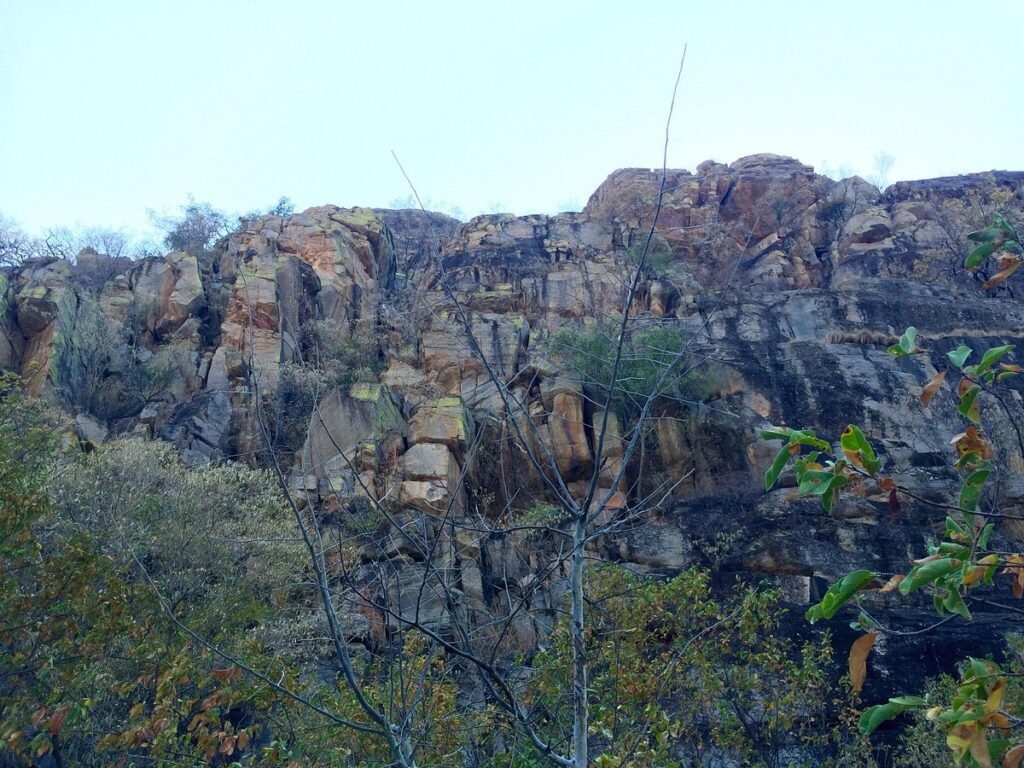
Tsodilo Hills is an incredible archaeological site located in the northwest of Botswana, near the Namibian border. It is often referred to as the “Louvre of the Desert” due to the vast collection of rock art and holds great spiritual significance to the San Bushmen who believe it to be the birthplace of all creation.
This UNESCO World Heritage site comprises of four main hills known as the Male Hill, the Female Hill, Child Hill, and an unnamed knoll. Each of these hills has unique characteristics and is steeped in local myth and legend. The site is considered sacred, representing the spiritual resting place for the souls of the deceased and the venue for performing rituals.
Tsodilo Hills contains one of the highest concentrations of rock art in the world, with over 4,500 paintings estimated to be as old as 100,000 years, showcasing the lives and beliefs of the communities that have resided in the area over several millennia. The rock art depicts a variety of scenes, including hunting, dancing, and animals like giraffes, elephants, and rhinos. These rock paintings provide a fascinating insight into the history and culture of the ancient San Bushmen.
Along with rock art, the site has been invaluable in archaeological terms with more than 350 sites discovered that reveal the history of human habitation over the past 100,000 years, including stone tools from the early Stone Age.
In addition to its historical and cultural value, Tsodilo Hills offers the chance to experience the beauty and tranquility of the Kalahari Desert. Visitors can take guided tours of the rock art sites and hike the trails around the hills to appreciate the stunning views.
Despite being remote, Tsodilo Hills is accessible by road and there are campsites nearby for those wishing to stay overnight. The local communities offer guided walks and contribute to preserving the area. The site also has a small museum which provides information about the archaeological findings and the significance of the rock art.
Visiting Tsodilo Hills offers not just a journey back in time, but a chance to immerse oneself in an ancient culture and a landscape of stark, desolate beauty. It is a significant spiritual and cultural landmark in Botswana that captures the essence of humanity’s early history.
Makgadikgadi Pans National Park
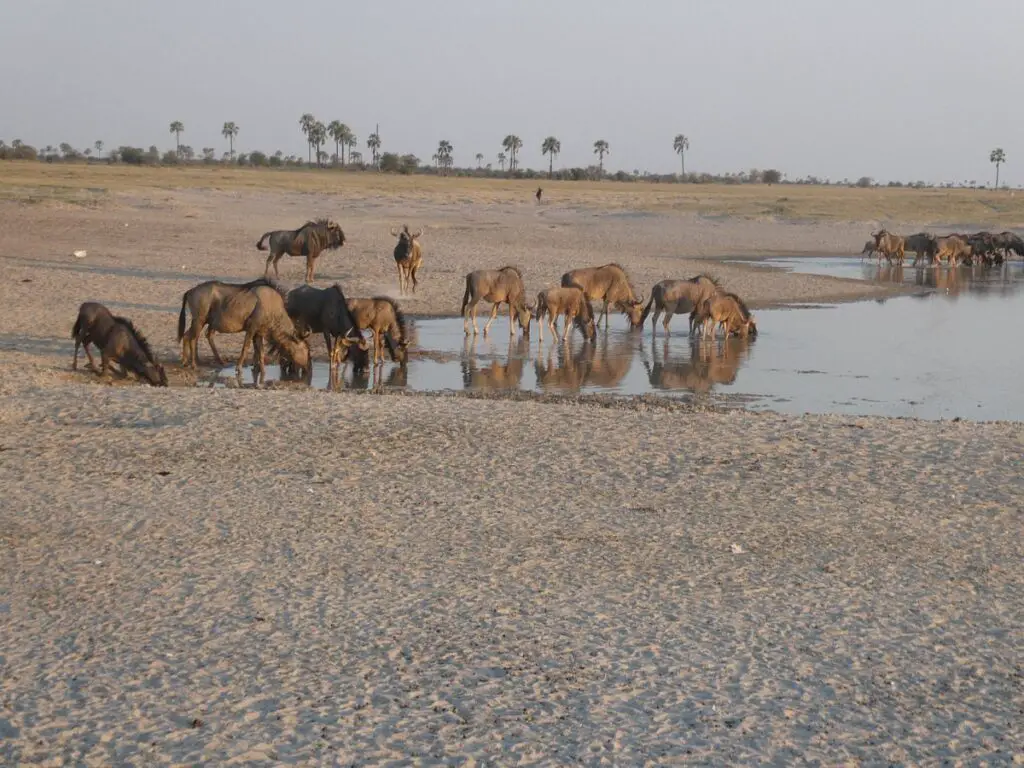
Makgadikgadi Pans, located in the heart of the dry savanna of northeastern Botswana, is one of the largest salt flats in the world. The pans, covering 16,000 square kilometers, are all that remains of the formerly enormous Lake Makgadikgadi, which once covered an area larger than Switzerland, but dried up several thousand years ago.
Makgadikgadi Pans are in fact two main pans – the larger Sua (Sowa) Pan and the smaller Ntwetwe Pan. These are not the only two pans within the area, but they are the largest, and are separated by sandy desert and numerous smaller pans.
A unique aspect of the Makgadikgadi Pans is its seasonal transformation. During the dry season, the pans are a vast, desolate white salt landscape that stretches as far as the eye can see, making for an otherworldly and awe-inspiring scene. When the rains come, usually between November and March, the pans fill with water, attracting thousands of flamingos and other migratory birds, while the surrounding grasslands attract one of Africa’s biggest zebra populations and wildebeests.
The Makgadikgadi Pans are also known for the ancient baobab trees that dot the landscape, some of which are estimated to be over 4,000 years old. Kubu Island, a granite rock outcrop, is one of the most popular tourist sites in the area. It is covered in these ancient baobabs and offers breathtaking views of the pans.
In addition to the flamingos, the Makgadikgadi Pans support a number of species adapted to the harsh conditions, including various types of gazelles and antelopes, lions, cheetahs, jackals, foxes, and hyenas. The region also has a significant population of brown hyenas and the famous Kalahari lions.
The Makgadikgadi Pans offer a truly unique safari experience, very different from the typical game drives of other African national parks. Quad biking and walking safaris are popular activities, as well as star-gazing at night when the lack of light pollution reveals a stunningly clear view of the Milky Way.
In terms of human history, Stone Age artifacts and fossils have been found in the area, as well as evidence of early human habitation. The cultural interactions with the indigenous San people provide an enriching element to a visit to the pans.
Whether seeking the solitude of the dry season or the abundant bird life of the wet season, the Makgadikgadi Pans offer an unparalleled experience of an ancient and remarkable landscape.
Nxai Pan National Park
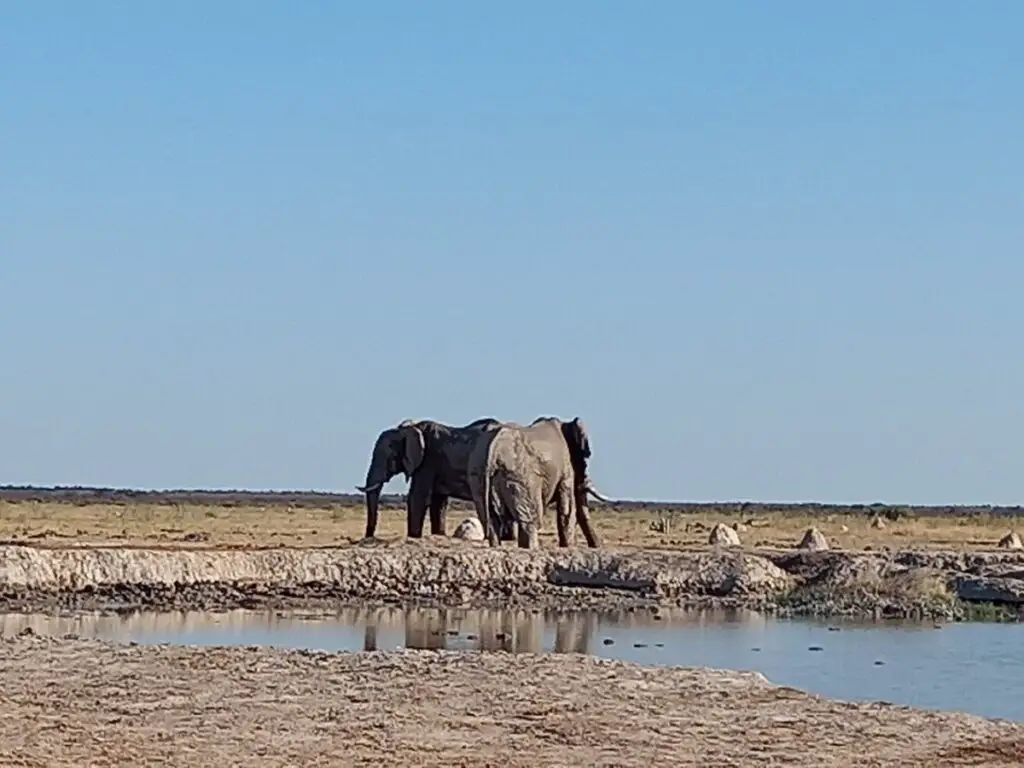
Nxai Pan National Park, located in north-eastern Botswana, is a unique destination that showcases both the natural and cultural heritage of the country. Established in 1970, the park covers an area of about 2,500 square kilometers, which predominantly consists of grassland and mopane woodland.
One of the main features of the park is the Nxai Pan itself, a large salt pan that is part of the ancient lake bed of Makgadikgadi. The pan’s flat and dry landscape, sprinkled with clusters of umbrella acacia trees and short grass savannah, provides a stark contrast to the otherwise diverse terrain.
During the rainy season, usually between November and April, the pan and surrounding plains come alive with greenery. The park attracts vast herds of animals, including zebras, wildebeests, and giraffes, which migrate to the park to make use of the fresh grazing and water-filled pans. Other species that can be spotted include lions, cheetahs, hyenas, and various antelope species such as springbok and impala.
In addition to the diverse wildlife, Nxai Pan National Park is also a birder’s paradise, particularly during the wet season when the rain-filled pans attract numerous species of water birds. Visitors can spot species such as kori bustards, secretary birds, and a range of migratory birds, including flamingos and pelicans.
Tuli Block
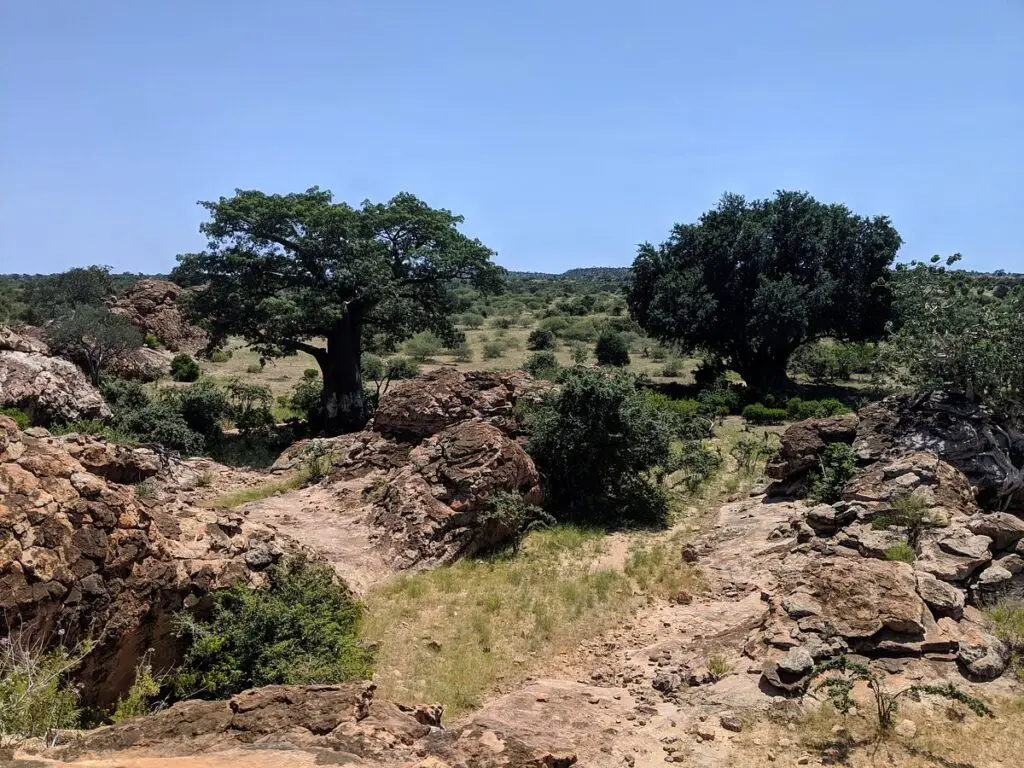
Tuli Block is a narrow fringe of land located at Botswana’s eastern border. This region is known as the ‘Hardveld’ due to the rugged and dramatic landscape it features. Characterized by uniquely striking geographical features, such as rocky outcrops, scattered basalt hills, and dry riverbeds, Tuli Block stands out from Botswana’s predominantly flat terrain.
Covering an area of about 1,000 square kilometers, the Tuli Block is not an official game reserve but rather a private wildlife area made up of a number of privately-owned game farms and reserves, including the Tuli Game Reserve and the Northern Tuli Game Reserve.
The vegetation in this region mainly consists of mopane woodland interspersed with patches of Kalahari sandveld, making the area an excellent habitat for a wide variety of animals. The region is home to large herds of elephants, and it’s one of the best places in Southern Africa to observe these magnificent animals. In addition to elephants, the Tuli Block also hosts an abundance of other wildlife species such as lions, leopards, cheetahs, hyenas, wild dogs, and a variety of antelope species including kudus, impalas, and waterbucks.
The bird life in Tuli Block is prolific as well, with over 350 bird species recorded, making it a bird-watcher’s paradise. Key species to look out for include the African fish eagle, martial eagle, lilac-breasted roller, and the southern yellow-billed hornbill.
Accommodation in Tuli Block ranges from luxury lodges and safari camps to more rustic and budget-friendly options. Activities offered include game drives, bush walks, bird watching, and cultural and historical tours.
Kgalagadi Transfrontier Park

he Kgalagadi Transfrontier Park, located in the Kalahari regions of both Botswana and South Africa, is one of the largest protected wilderness areas in the world. Spanning an impressive 3.6 million hectares, it represents a visionary fusion of two national parks, namely South Africa’s Kalahari Gemsbok National Park and Botswana’s Gemsbok National Park. The park was officially opened on May 12, 2000, making it Africa’s first formally declared transfrontier park.
The Kgalagadi, meaning “place of thirst”, features a stark, desert landscape characterized by red sand dunes, sparse vegetation, occasional trees, and dry riverbeds known as the Nossob and Auob Rivers. Despite the seemingly inhospitable environment, the park supports a great variety of life.
The park is renowned for its predators, particularly its majestic black-maned Kalahari lions. It is also home to other large cats such as leopards and cheetahs. Hyenas, jackals, and various smaller predators also thrive here. Antelope, including the gemsbok, springbok and eland, as well as giraffes, can be spotted in the park.
Kgalagadi Transfrontier Park is also a bird lover’s paradise with more than 200 bird species recorded, including birds of prey like the pygmy falcon and the sociable weaver which builds large communal nests.
Several unique and adapted species inhabit the Kgalagadi. For instance, the gemsbok is particularly adapted to desert conditions with its ability to raise its body temperature before perspiring to reduce water loss. Meerkats, with their ability to regulate their body temperatures, are also a common sight in the park.
The park offers various accommodations, ranging from luxury lodges to camping sites. There are three main tourist reception areas in the park: Twee Rivieren, Mata-Mata and Nossob. Guided game drives and walks are popular activities among visitors.
Kgalagadi Transfrontier Park is not just about wildlife though. It also offers cultural insights into the San people who have lived in the area for thousands of years. Some San people still live within the park boundaries, continuing their traditional semi-nomadic lifestyle.


